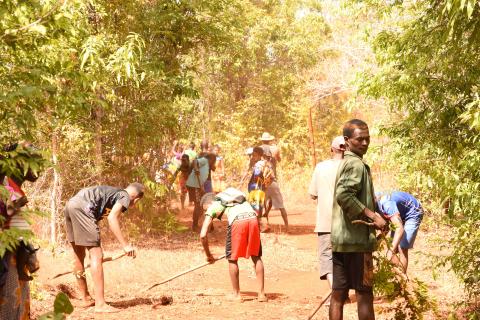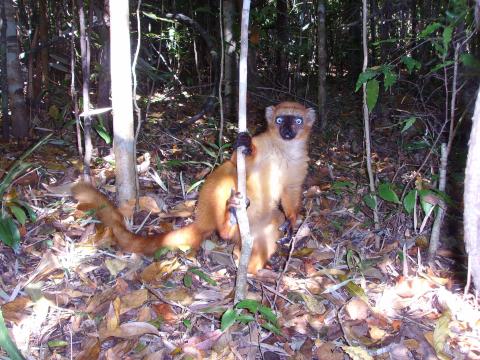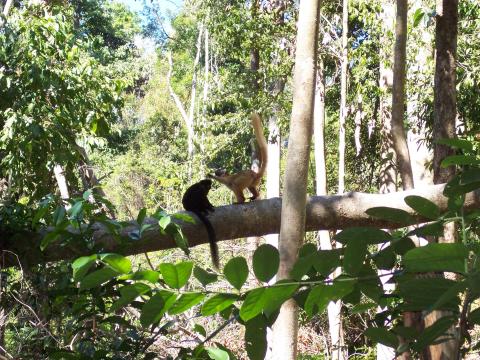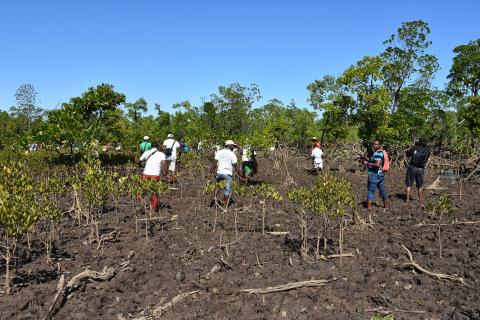AEECL
Like all other lemurs in Madagascar, the Blue-eyed Black lemur (Eulemur flavifrons) is threatened by deforestation as well as poaching for bushmeat and the illegal wildlife trade. It is found only on the Sahamalaza peninsula in northwestern Madagascar and its population is highly fragmented. It is listed as Critically Endangered on the International Union for Conservation of Nature (IUCN) Red List of Threatened Species.

Since 2002, the Zoo de La Palmyre has supported the work of the Lemur Conservation Association (AEECL), which led to the creation of the Sahamalaza-Iles Radama National Park in 2007. The AEECL protects the blue-eyed lemur population that lives in the national park and seeks to reduce human pressures in the area, while also trying to improve living conditions in communities surrounding the national park.

Firebreak maintenance © AEECL 
Female blue-eyed lemur © AEECL
The Ankarafa forest research station in Sahamalaza regularly welcomes researchers studying the eco-ethology of Blue-eyed lemurs and other lemur species in the area. The AEECL has also set up a camp to accommodate ecotourists.
The association employs eco-wardens to carry out regular surveillance patrols of the national park and Ankarafa forest. Along with local communities, it organizes reforestation and forest fire prevention activities. Additionally, it supports local communities by building wells to facilitate access to drinking water, trains gardeners responsible for producing and raising trees that will be used for reforestation, and maintains paddy field drainage canals.

Blue-eyed lemurs © AEECL 
Reforestation © AEECL
Finally, the AEECL builds schools and finances the salaries of teachers. The association also regularly participes in awareness events (World Environment Day, National Lemur Festival, Madagascar Independence Day, International Women’s Day…).